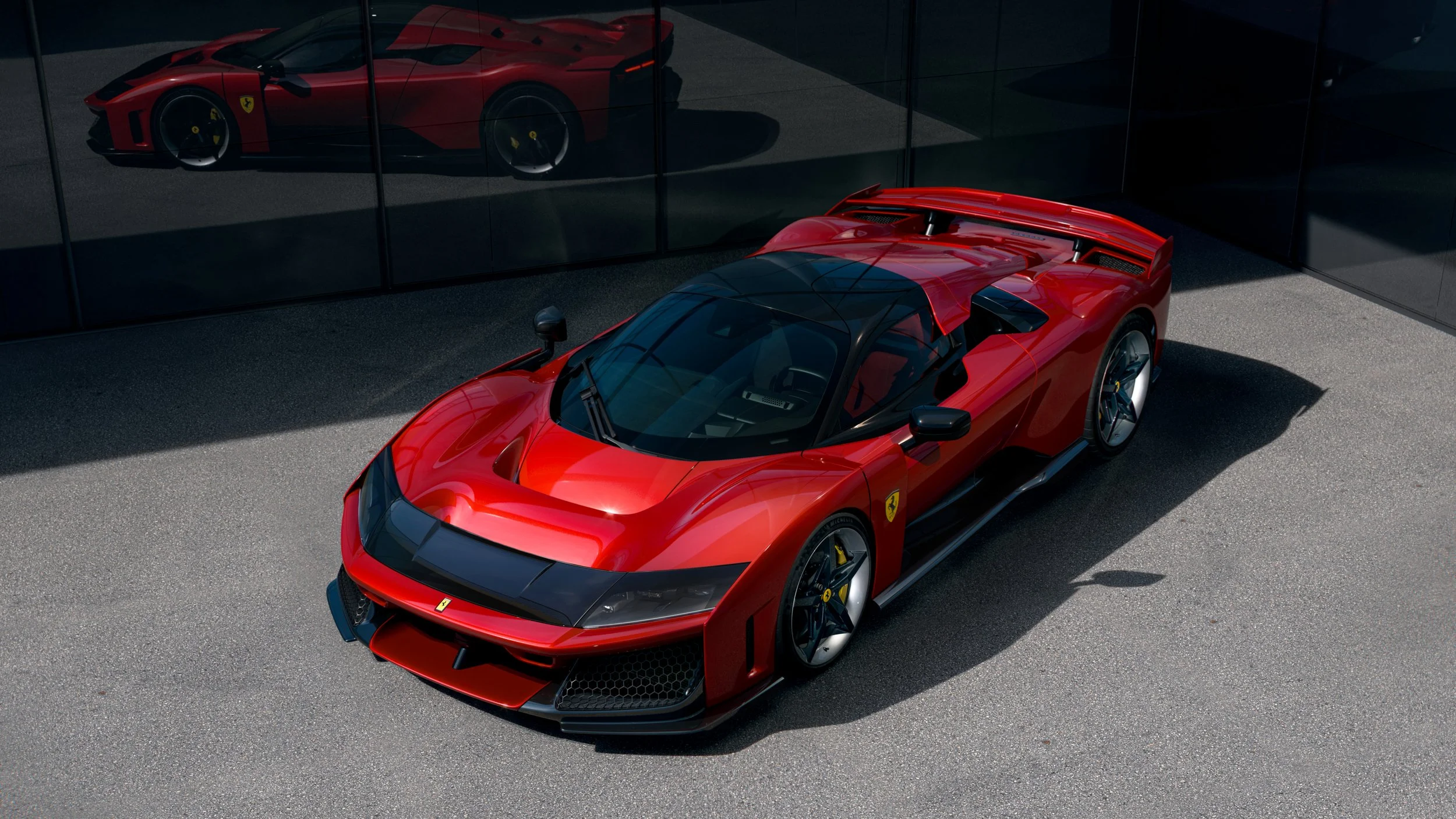Ferrari F80 succeeds LaFerrari and challenges McLaren W1
Ferrari has unveiled the most powerful road car to ever come out of Maranello - the F80. Powered by a 1,184bhp V6 hybrid engine, the F80 is the long-awaited successor to the LaFerrari and comes hot on the heels of its rival, the McLaren W1.
The F80 also follows in the footsteps of Ferrari icons like the GTO, F40 and F50. The Prancing Horse says the new release is “showcasing the best that (it) has achieved in terms of technology and performance.”
Powertrain
The powertrain is inspired by the Ferrari 499P car's recent successes at Le Mans. It combines a 3.0-litre twin-turbo V6 engine with three electric motors, two on the front axle and one on the rear and uses an eight-speed dual-clutch transmission. Formula 1 technology is also carried over, with electric turbo technology seen on a Ferrari for the first time. This uses an electric motor between the turbine and compressor of each turbo to boost power for an instant response from low down in the rev range.
All in all, the combination of factors produces 1,184bhp of output, giving the F80 a 0-62mph time of 2.15 seconds, 0-124mph time of 5.75 seconds and a top speed of 217mph. Oh, and it will do a maximum of 9,200rpm.
All electric components on the F80 have been developed at Maranello, although the F80 isn’t a plug-in, instead charging itself when out on the road. This means no electric-only mode.
Aerodynamics
Ferrari’s engineering team have worked their magic on aerodynamics, with the F80 generating 1,000 kg of downforce at 155mph. The front of the car produces 460kg of downforce at that speed and takes its design cues from F1 and WEC cars. The nose acts as a main plane for the front wing and an S-Duct with two flaps enhances airflow and minimises blockage. This system, along with the car’s active suspension, optimises aerodynamics by maintaining the ideal ground clearance in real time, crucial for maintaining high downforce levels.
At the rear, the F80’s diffuser and rear wing contribute the remaining 590 kg of downforce. The diffuser’s expansion volume has been maximised through a specially inclined engine and chassis, while the rear wing’s adaptive system adjusts its angle and height for optimal downforce and drag reduction. This ensures the car’s aerodynamic balance is fine tuned for different driving conditions, improving speed and handling.
Chassis
Ferrari has used a few different materials when it comes to the chassis. The roof and cell are made from carbon fibre, while the front and rear subframes use aluminium, fastened with titanium screws. 3D printing has also been used when creating the double-wishbone set-up.
Compared to the McLaren W1, the F80 is both longer (4840mm) and heavier (1525kg).
Exterior
The design of the F80 has been led by Flavio Manzoni and the team at the brand’s Styling Centre taking inspiration from Scudaria Ferrari F1 cars. The brief was to create a car that had a harmonious balance between form and function, and forged a link between the past and future of Ferrari design.
Certain elements like the wheel arches pay tribute to everyone’s favourite car, the F40, while there are references to aerospace which throws in a more futuristic twist to the design. The front end is a new look for the Prancing Horse, and features the previously mentioned S-Duct consisting of a fixed element connecting the two front wings. The muscular rear wing is emphasised by the sculpted flow from the sides of the F80.
Butterfly doors open to an almost 90 degree angle thanks to a dual axis rotation hinge mechanism. The rear engine cover matches the styling cues seen on the door from the side view and includes six slots venting hot air from the V6 engine.
Interior
The compact cockpit is single-seat/F1-inspired (despite being two a seater), with the passenger seat pushed further back and integrated into the trim of the cabin in black to “disappear from view”. The aim is to then envelope the controls around the driver as best as possible to save space and create a cocoon-like effect.
The F80’s steering wheel is newly developed specifically for the car, being built smaller and with a flatter top and bottom. It has been made grippier for those track days and also contains physical buttons, allowing the driver to switch between Hybrid, Performance and Qualify modes, a noticeable change from the digital layouts used on recent Ferrari models.
Cost
Just 799 examples of the F80 will be produced at a cost of £3 million a piece, with all inevitably sold out to Ferrari’s die hard customers. The first deliveries will take place in late 2025/early 2026.
words: Mike Booth
pictures: Ferrari North Europe









